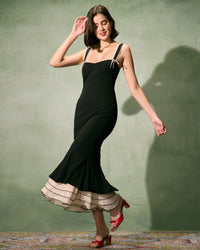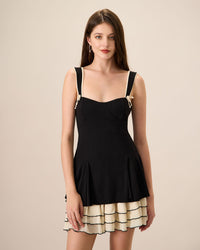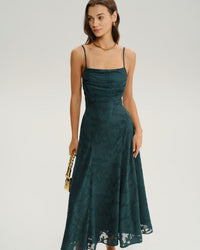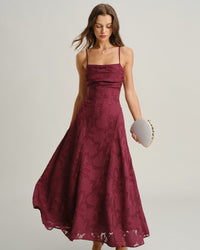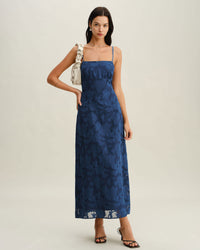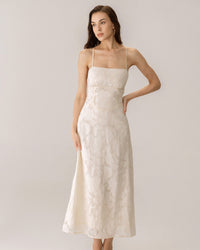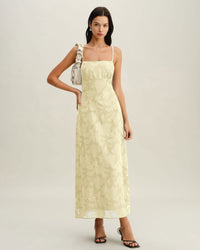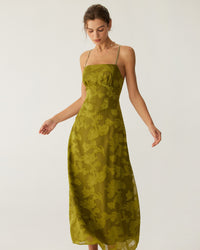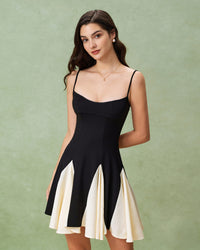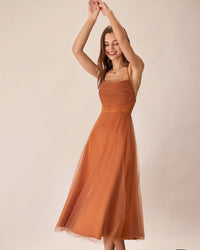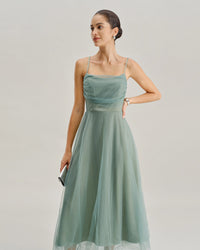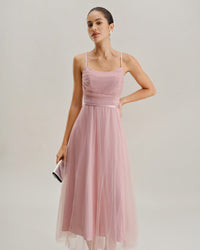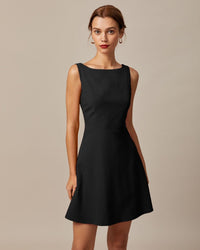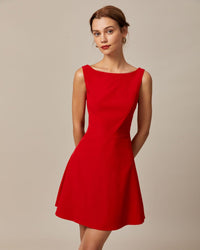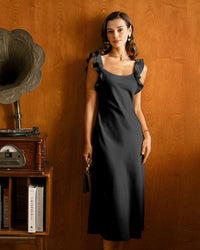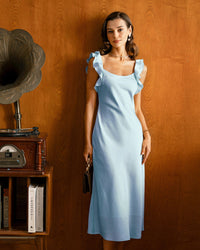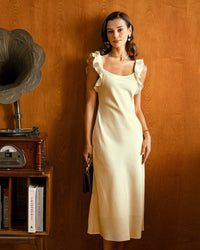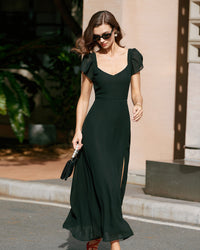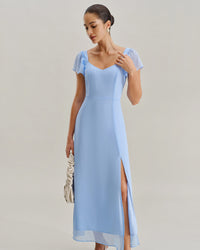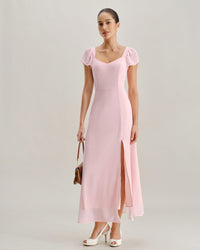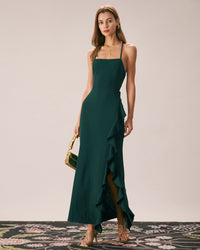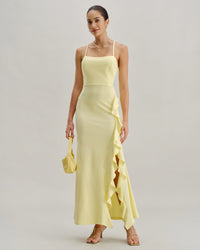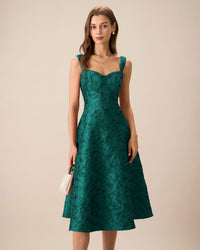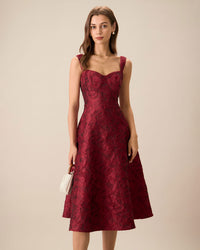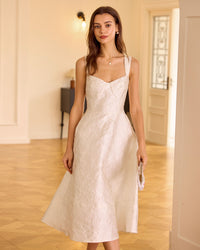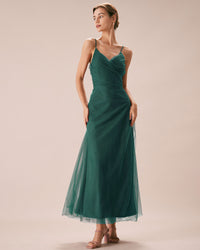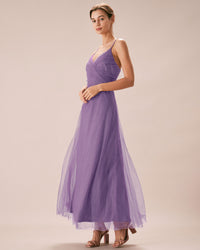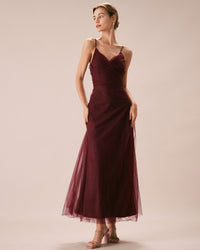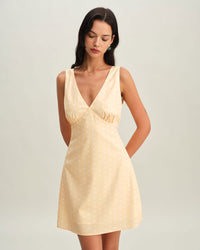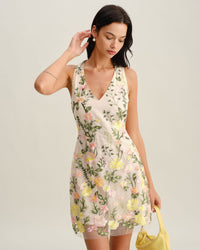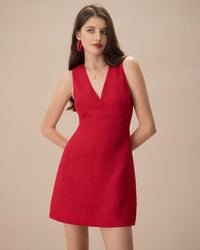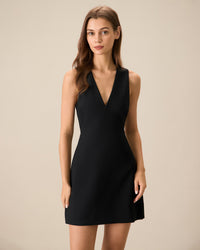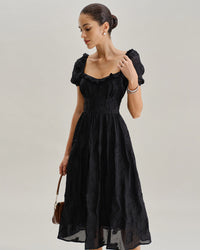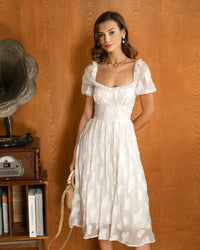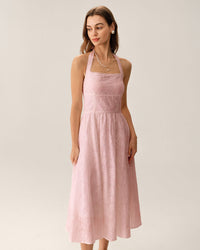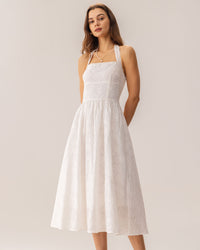Formal Dresses
Dressed for the moment, not just the dress code
There’s formal—and then there’s yours.
Weddings, banquets, holiday dinners, gallery openings, sorority formals, even rooftop parties with a dress code — each of them asks for something different. And no one wants to blend in at a black-tie event.
At Rihoas, formal dressing doesn’t mean overdressing. It means precision. Shape, fabric, tone, and energy — brought together in pieces that move the right way and hold their form.
What Kind of Formal Dress Are You Looking For?
1. Elegant Formal Dresses
When the invite says “elegant,” reach for floor-grazing gowns, rich materials like velvet or crepe, and clean cuts that don’t need embellishment to feel expensive. Minimalist silhouettes with well-placed seams are just as powerful as sparkle — sometimes more.
2. Black-Tie and Evening Gowns
Strapless or off-shoulder, sculpted bodices, high slits or open backs — these styles were made for camera flashes. Pair a black or gold formal gown with structured heels and a sleek clutch. Add a bold lip, and the look finishes itself.
3. Semi-Formal Dresses
This is where cocktail meets effortless. Think midi lengths in satin, pleated skirts, or puff-sleeved A-lines. The kind of dress that goes from work event to dinner without missing a step.
4. Modest and Long Sleeve Formal Dresses
For those looking for coverage that still carries shape. Long-sleeved gowns in matte satin, crepe, or ribbed textures keep lines clean. High necklines pair well with open backs for contrast. Elegance doesn’t need exposure.
5. Dresses for Specific Occasions
-
Garden Formal: Soft florals, organza overlays, pastel tones
-
Winter Ball Dresses: Velvet, deep jewel tones, layered sleeves
-
Sorority or Junior Formals: Fun shapes, fit-and-flare silhouettes, shorter hems
-
Church or Gala Ready: Refined color palettes, sleeve options, timeless necklines
Color Trends and Fabric Guidance
Black Formal Dresses
Always sharp. Try a square neckline, asymmetric shoulder, or added texture like jacquard or sequin to break the monochrome.
Red, Gold, and Emerald Gowns
Statement tones that still photograph beautifully. These work across skin tones and light settings — indoor or evening events especially.
Champagne and Ivory Formalwear
Perfect for summer or daytime events. Works well with gold-toned jewelry and soft makeup. Choose if you’re aiming for subtle and styled.
Fabric Tip
Satin for structure and light reflection. Crepe for clean drape. Chiffon or tulle for motion. Lace or embellishment for evening impact.
Dresses That Fit You — Not Just the Standard
Plus Size Formal Dresses
Tailored, not oversized. Look for boned bodices with stretch lining, waist definition without squeeze, and shoulder support that holds.
Maternity Formalwear
Empire waists, wrap shapes, and breathable linings allow room and shape. No compromise required.
Petite Formal Dresses
Proportioned cuts that sit where they’re supposed to. Avoid overwhelming length or volume — stick to tailored midis or A-line gowns.
A good formal dress doesn’t try to be noticed. It just is.
Whether it’s a gala, a black-tie wedding, or a dinner that means more than usual — you don’t need to be loud to make an impression. You just need to be sharp, effortless, and fully yourself.
Start with a dress that knows the difference.
Formalwear FAQ
Q1. What’s the difference between formal and semi‑formal attire?
Formal wear (eveningwear) means floor‑length gowns or structured midis in luxury fabrics with black‑tie‑level accessories. Semi‑formal (cocktail) allows knee‑to‑midi dresses or polished separates; when unsure, go one step more formal.
Q2. Can I wear a short dress to a formal event or black‑tie wedding?
Yes—choose a tailored knee‑to‑midi dress in satin, silk faille, or crepe with refined heels and minimal jewelry. For strict black tie, tea‑length or floor‑length is safest.
Q3. What colors are appropriate for formal evening wear?
Evening‑safe colors include black, navy, jewel tones (emerald/ruby/sapphire) and metallics (gold/silver). Daytime or outdoor ceremonies can suit pastels; most wedding guests avoid all‑white unless the invite permits it.
Q4. How do I elevate a simple formal dress?
Use one hero accent—statement earrings, a bold lip, or sculptural heels—plus a structured clutch. Keep metals consistent and limit the palette to three colors total.
Q5. Are long sleeves okay for formal events?
Absolutely—long‑sleeve gowns in satin, lace, crepe, or velvet are formal. Choose sheer sleeves or silk blends for warm venues and heavier crepe/velvet with closed‑toe pumps for winter formals.



